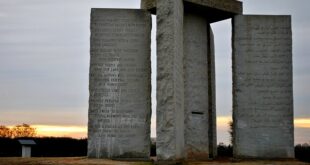Born on July 13, 1527, in London, England, John Dee was an “English alchemist, astrologer, and mathematician who contributed greatly to the revival of interest in mathematics in England.”
– Encyclopaedia Britannica
“Dee was an exceptional student who entered Cambridge University when he was fifteen…Dee excelled at Cambridge and was named Underreader (junior faculty member) before taking his degree. After graduating he traveled to the Continent to continue his studies, achieving overnight fame in Paris at the age of twenty-three, when he delivered a series of lectures on the recently exhumed works of the Greek mathematician Euclid.”
– Visions and Prophesies
“After lecturing and studying on the European continent between 1547 and 1550, Dee returned to England in 1551 and was granted a pension by the government. Dee became astrologer to the queen, Mary Tudor, and shortly thereafter was imprisoned for being a magician but was released in 1555.”
– Encyclopaedia Britannica
“Dee met the future Queen Elizabeth while she was being held under house arrest by Queen Mary. The two developed a freindship that lasted for the rest of their lives. As queen, Elizabeth gave Dee money…More importantly, she protected him from those who accused him of withcraft.”
– Visions and Prophesies
“Besides practicing astrology and horoscopy in the court of Elizabeth I, whose favour he enjoyed, he also gave instruction and advice to pilots and navigators who were exploring the New World. He was asked to name a propitious day for Elizabeth’s coronation, and he gave her lessons in the mystical interpretation of his writings.”
– Encyclopaedia Britannica
“Dee’s house in Mortlake, near London, was for many years a major center of science in England. Dee salvaged many ancient scientific tomes that had been scattered when Roman Catholic churches and monasteries were ransacked during the Reformation, and his own library of more than 4,000 books may have been the largest of its kind in Europe at the time.”
– Visions and Prophesies
“Before we raise our eyes to heaven, kabbalistically illuminated by the contemplation of these mysteries, we could perceive very exactly the constitution of our Monad as it is shown to us not only in the LIGHT but also in life and nature, for it discloses explicitly, by its inner movement, the most secret mysteries of this physical analysis.”
John Dee, Theorem XVIII
“…In Dee’s most Hermetic work, the Monas Hieroglyphica, (One Hieroglyph), published in Antwerp in 1564, Dee believed he had found a ‘hieroglyph’, a hitherto hidden ‘symbol’ which contained in its form the very unifying principle of reality. It is a kind of micro-chip which contains within it all the most elementary principles of the universe. It is to be contemplated upon and fixed in memory as an archetype applicable to all studies. But what is it? If one can imagine a great ocean of prima materia which we may call in this context ‘spirit’, a pure unformed, undirected, unmoving, unmoved homogenous world, then we see the beginning of the universe. If a hand were to, as it were, drop the Monas Hieroglyphica into that ocean of potentials, the materia prima would immediately start forming itself into the universe we imagine we know.”
– Tobias Churton, The Gnostics
“In 1570 the first English translation of Euclid’s work appeared, and, although it is credited to Sir Henry Billingsley, who became sheriff and later lord mayor of London, Dee probably wrote part or all of it. In addition, he wrote the preface, which encouraged the growing interest in the mathematical arts.”
– Encyclopaedia Britannica
“…Dee stayed in his library, where, bent over his books, he explored the Talmudic mysteries, the Rosicrucian theories, and a host of other obscure and occult subjects.”
– Daniel Cohen, Masters of the Occult
Dee died in 1608 was two years before the first Rosicrucian manifesto, the Fama Fraternitas, began to circulate in 1610.
Mystae
 Conspiracy Plot
Conspiracy Plot

